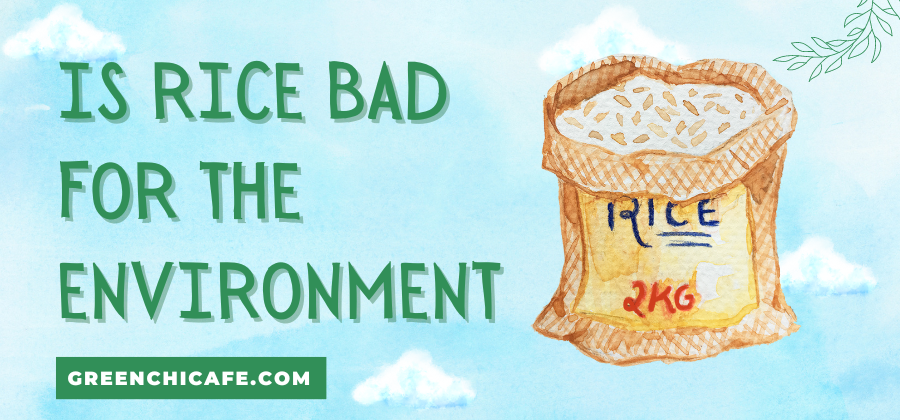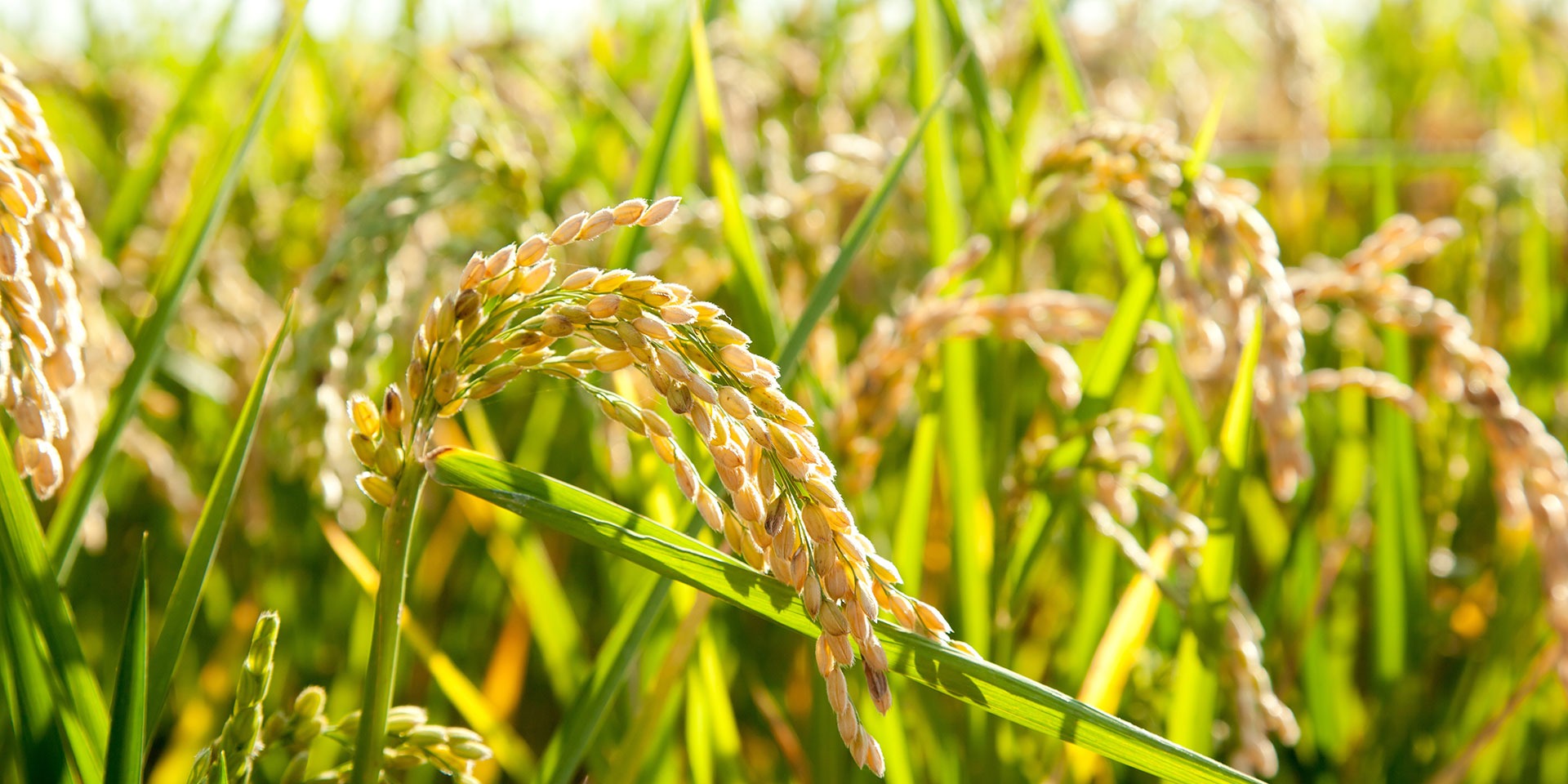Rice is a staple food for billions of people around the world.
But with concerns about climate change and environmental sustainability growing, many are asking: is rice bad for the environment?
This article examines the environmental impacts of rice production and the role it plays in greenhouse gas emissions and climate change.
While rice production does contribute significantly to greenhouse gas emissions, especially methane, it would be shortsighted to claim rice is unconditionally bad for the environment.
Rice provides sustenance for billions globally, especially in developing nations where food security is a concern.
With more sustainable practices like alternate wetting and drying, rice production can be improved to emit fewer greenhouse gases without sacrificing yields.
So, while flooded rice fields are problematic, rice itself remains an essential crop and staple food that, with conscientious cultivation methods, can continue feeding the world in a more eco-friendly manner.
Key Points
- Rice accounts for 12% of global methane emissions but also feeds billions of vulnerable people.
- Alternate wetting and drying of rice paddies can reduce emissions by up to 50%.
- Beyond emissions, rice strains water resources and leads to soil degradation.
- More sustainable practices can reduce rice’s climate impact without lowering yields.
How Does Rice Production Impact Greenhouse Gas Emissions?
Rice is the single biggest source of methane emissions from agriculture, accounting for about 12% of total global methane emissions.
Methane is an incredibly potent greenhouse gas, trapping heat in the atmosphere and contributing significantly to global warming.
The flooded conditions required to grow rice cause the anaerobic decomposition of organic matter in the soil, which produces methane.
When rice paddies are flooded, it changes conditions in the soil allowing methane-producing microbes to thrive.
This methane is then released into the atmosphere.
Studies show that rice methane emissions have risen in recent decades, likely due to increased fertilizer use and expanded rice cultivation.
So, rice production is a significant driver of agricultural greenhouse gas emissions.
Does Rice Produce More Emissions Than Other Foods?
Compared to other staple crops like wheat and corn, rice has a much higher climate impact per calorie produced.
One study found rice emits about 2-3 times more greenhouse gases per calorie than wheat or corn.
And on a per-calorie basis, rice emits more greenhouse gases than pork, dairy, or poultry farming.
Only beef and lamb have higher emissions than rice per calorie.
So by most measures, rice is one of the most emissions-intensive staple foods, behind only ruminant meats like beef and lamb.
Its high methane emissions drive rice’s outsized contribution to climate change.
Why Does Flooded Rice Production Increase Methane Emissions?
The flooded conditions required for growing rice are the main driver of its high methane emissions.
Flooding rice fields provide a few key benefits: it prevents weed growth, reduces soil degradation, and provides a habitat for rice.
But flooding also changes the soil chemistry, lowering oxygen levels.
In these anaerobic, low-oxygen environments, microbes called methanogens thrive.
Through a process called methanogenesis, these archaea produce methane as their metabolic byproduct.
This methane bubbles up through the floodwater and is released directly into the atmosphere.
So, the unintentional side effect of flooding rice paddies is increased methane production and emissions.
Are There Lower-Emission Methods of Growing Rice?
Given rice’s climate impact, researchers have explored lower-emission rice farming methods.
Alternating wetting and drying of rice fields can reduce methane emissions by up to 50%.
This involves flooding fields and then letting them dry out alternately instead of keeping fields continuously flooded.
Letting soils dry out periodically reduces the activity of methane-producing microbes.
However, this technique may produce lower yields and requires more labor and monitoring to implement successfully.
Other alternative practices like changing fertilizer type, using rice varietals with lower methane emissions, or draining fields earlier have shown some potential to reduce emissions.
But flooded field conditions make it inherently challenging to grow rice with low emissions.
Does Rice Have Other Negative Environmental Impacts?
In addition to its high greenhouse gas emissions, rice production can have other environmental downsides:
- Water usage – Rice is a water-intensive crop, requiring on average over 2000 liters of water per kilogram of rice. This strains water resources, especially in water-scarce regions.
- Soil degradation – Continual flooding can deplete soils of oxygen and lead to reduced fertility over time. Flooding also causes erosion and nutrient loss from soils.
- Biodiversity loss – Flooded rice monocultures reduce biodiversity compared to naturally wetland environments. They provide a habitat for fewer species.
- Eutrophication – Runoff from rice fields can introduce nutrients like nitrogen and phosphorus into waterways, leading to excessive algae growth and eutrophication.
So rice production puts pressure on both water resources and the natural environment.
Emissions are not the only environmental concern.
Does Rice Play an Important Role in Food Security?
Globally, rice provides about 20% of dietary energy.
It’s a staple food and primary calorie source for millions across Asia and Africa.
So, rice is crucial for food security in many developing nations.
Given rice’s ability to produce high yields with relatively low labor inputs, it has supported population booms and economic growth in rice-farming regions.
Shifting away from flooded rice production could jeopardize food security in many parts of the world that rely on rice as a staple crop.
So, while environmentally problematic, rice provides sustenance for many vulnerable people.
Can Rice Production Become More Sustainable?
While flooded rice production will always result in some methane emissions, researchers are exploring ways to reduce its climate footprint and make it more sustainable:
- Developing rice varieties with lower methane emissions through selective breeding
- Using alternate wetting and drying instead of continuous flooding
- Improving fertilizer management to reduce methane and nitrous oxide emissions
- Shifting less productive rice paddies to other uses while maintaining yields on the most productive land
- Exploring rotational practices to incorporate rice into crop rotations with other grains
- Improving water management and irrigation practices to reduce water usage
With development and knowledge transfer, many best practices can be shared globally to continue improving rice’s environmental sustainability without sacrificing yields or food security.
Does Rice Deserve Its Reputation as a Climate-Unfriendly Crop?
Given how essential rice is for feeding billions of people, especially in developing nations, it may be unrealistic to paint rice as the environmental villain.
With thoughtful practices, rice production can be made more sustainable.
However, the reality remains that flooded rice cultivation, which is the dominant method globally, results in significant methane emissions and environmental degradation.
Rice has earned its reputation as a climate-unfriendly crop.
But the solution is not necessarily demonizing rice.
With more research and knowledge transfer, rice farmers can implement better practices to reduce environmental harm.
But systemic changes take time.
Given its importance for food security, rice will remain an essential crop.
But improvements in sustainability must be made to reduce its climate impact.
With innovation and education, rice can continue feeding the world without overburdening the planet.
How does rice affect the environment?
Rice cultivation affects the environment in several ways.
Firstly, flooded rice paddies are a major source of the potent greenhouse gas methane.
Methane is released from rice fields through microbial processes in the anaerobic soil.
This methane contributes to global warming and climate change.
Secondly, rice requires a large amount of water to grow – around 2000 liters per kilogram.
The intensive irrigation of rice needs strains of water resources, especially in water-scarce regions.
Flooding rice fields continually can also degrade soil health over time by reducing oxygen levels.
Finally, rice monocultures reduce biodiversity compared to natural wetlands.
The ecosystem supported by flooded rice paddies cannot support the diversity of plant and animal species that natural wetlands can.
Runoff from fertilizers used in rice farming also introduces excess nutrients into waterways, leading to detrimental algae blooms and eutrophication.
So through its high water usage, methane emissions, and effects on soils and biodiversity, rice cultivation has a substantial environmental footprint.
Sustainable practices are needed to reduce rice’s impact.
How does rice affect global warming?
As a major global source of methane emissions, rice production directly contributes to increasing global temperatures and global warming.
Methane is an incredibly potent greenhouse gas, trapping heat in the atmosphere much more effectively than CO2.
And atmospheric methane concentrations have been rising in recent decades, in part driven by rice paddy emissions.
This increased methane works to trap heat, causing the greenhouse effect which leads to rising average temperatures on Earth – global warming.
Additionally, the flooding required for growing rice produces conditions that foster methane-producing microbes.
So through its sizable methane emissions, rice plays a tangible role in observed warming trends and climate change.
Practices that mitigate methane from rice can help reduce its impact, but flooded rice agriculture fundamentally contributes to increased global temperatures.
How does climate change increase global temperatures?
Climate change increases global temperatures primarily through the greenhouse effect.
Certain gases in the atmosphere, like methane and CO2, trap heat from the sun that would otherwise radiate back into space.
This causes the greenhouse effect.
As human activity increases the concentrations of greenhouse gases like methane, more infrared radiation gets absorbed.
This raises temperatures in the atmosphere and on Earth’s surface.
Additionally, warmer temperatures cause feedback loops – like melting permafrost releasing more methane – which amplifies the greenhouse effect.
More atmospheric methane means more heat gets trapped, which further warms the planet.
Since the Industrial Revolution, the average global temperature has increased by 1.5°F.
Higher concentrations of greenhouse gases like methane from rice farming are the predominant cause of rising temperatures fueling climate change.
Without intervention, scientists project average global temperatures may rise by 5-10°F by 2100.
Mitigating potent methane sources like flooded rice agriculture is crucial to limit warming and prevent the most catastrophic climate change scenarios.
Key Takeaways
- Rice production accounts for about 12% of global agricultural methane emissions, making it a major driver of climate change.
- Flooded conditions are required for rice to produce methane through microbial processes in the soil. Alternate wetting and drying can reduce emissions.
- Beyond emissions, rice strains water resources and degrades soils. But it also provides food security for millions in Asia and Africa.
- With innovative practices and technology transfer, rice production can become more sustainable while maintaining yields.
FAQ
What percentage of methane emissions come from rice?
Rice production accounts for around 12% of total global methane emissions. This makes it one of the most significant contributors to agricultural greenhouse gas emissions.
Why does rice produce more emissions than other grains?
The flooded conditions required to grow rice foster methane-producing archaea that release methane into the atmosphere. Grains like wheat and corn do not require flooding, producing fewer emissions.
Can rice production be made more sustainable?
Yes, methods like alternate wetting and drying, improved fertilizer management, and using rice varietals with lower emissions can all reduce the climate impact of rice production. More innovations and knowledge sharing can continue improving the sustainability of rice farming.
Is eliminating rice farming feasible?
Because rice provides food security for millions in Asia and Africa, eliminating rice farming could jeopardize access to a nutritious staple crop. However, steps can be taken to make rice production more eco-friendly and reduce emissions.
We at GreenChiCafe are passionate about the environment and our natural world. Please check out our website for more great content on sustainability, green living, and how we can build a greener future together.

Annie is a passionate environmental writer and activist. She has been writing about sustainability, conservation, and green living for over 15+ years. Annie is dedicated to raising awareness about environmental issues and providing practical tips for living an eco-friendly lifestyle. When she’s not writing, you can find her volunteering with local environmental organizations, teaching workshops on zero waste living, or exploring nature. Feel free to get in touch with Annie: annie@greenchicafe.com


